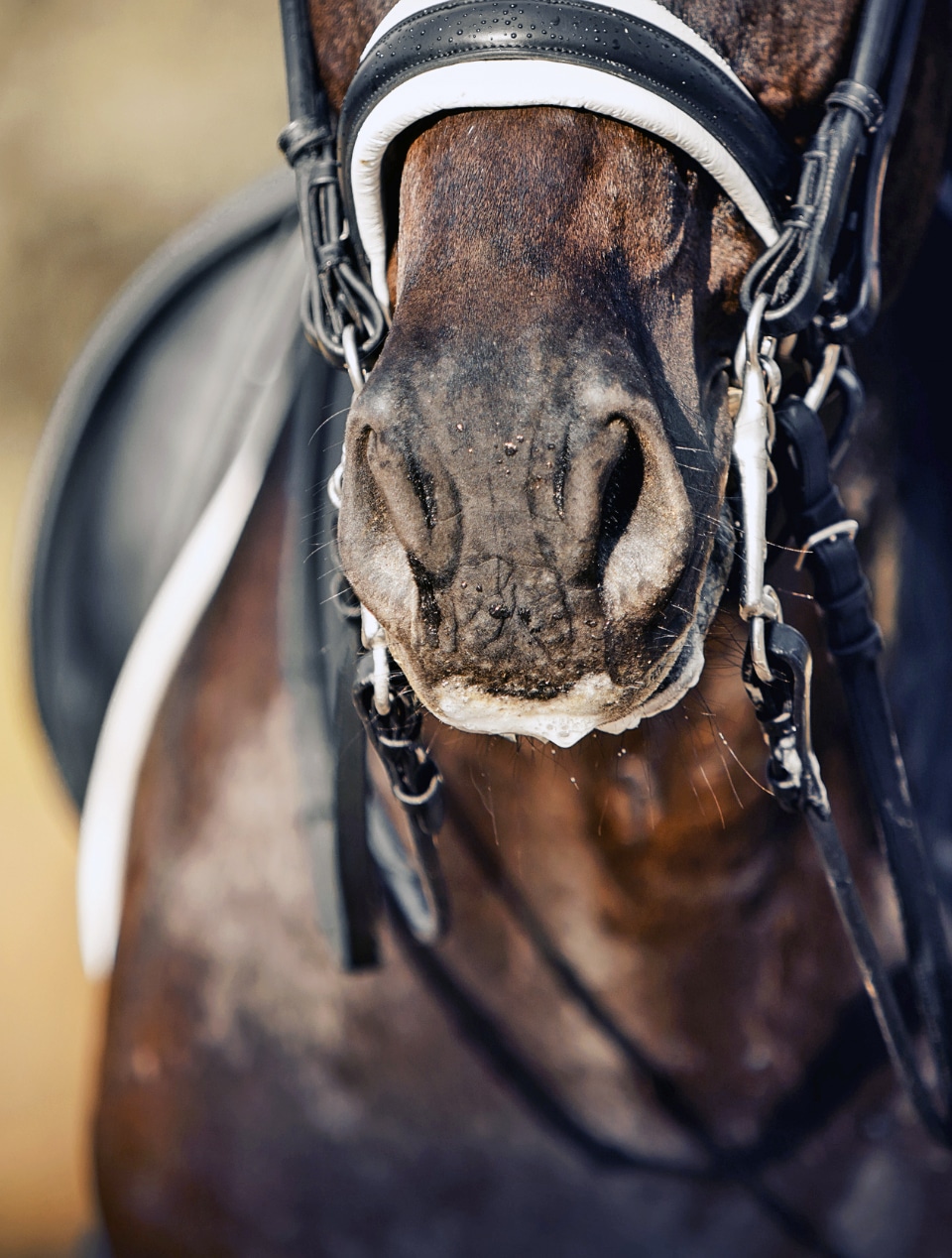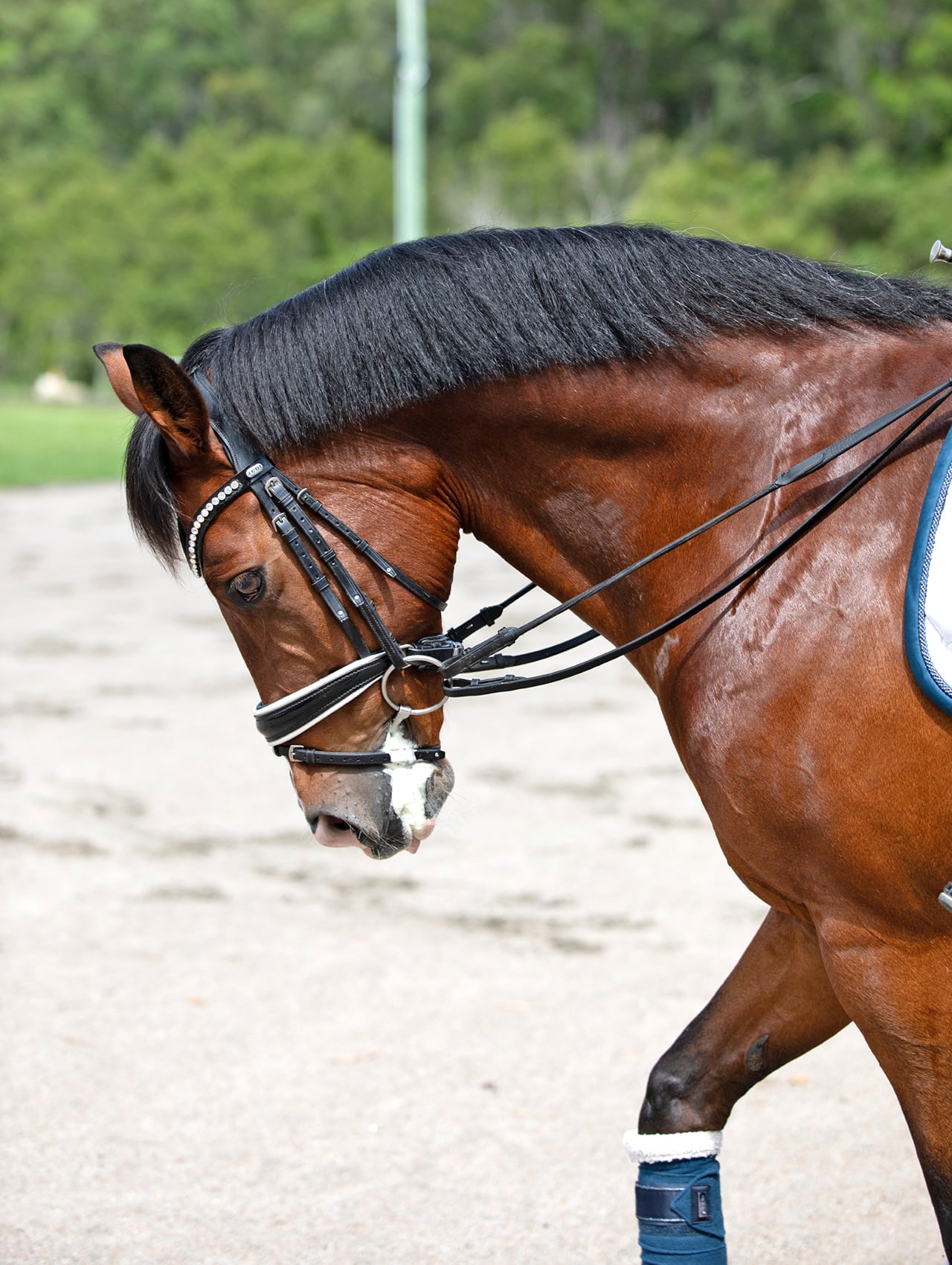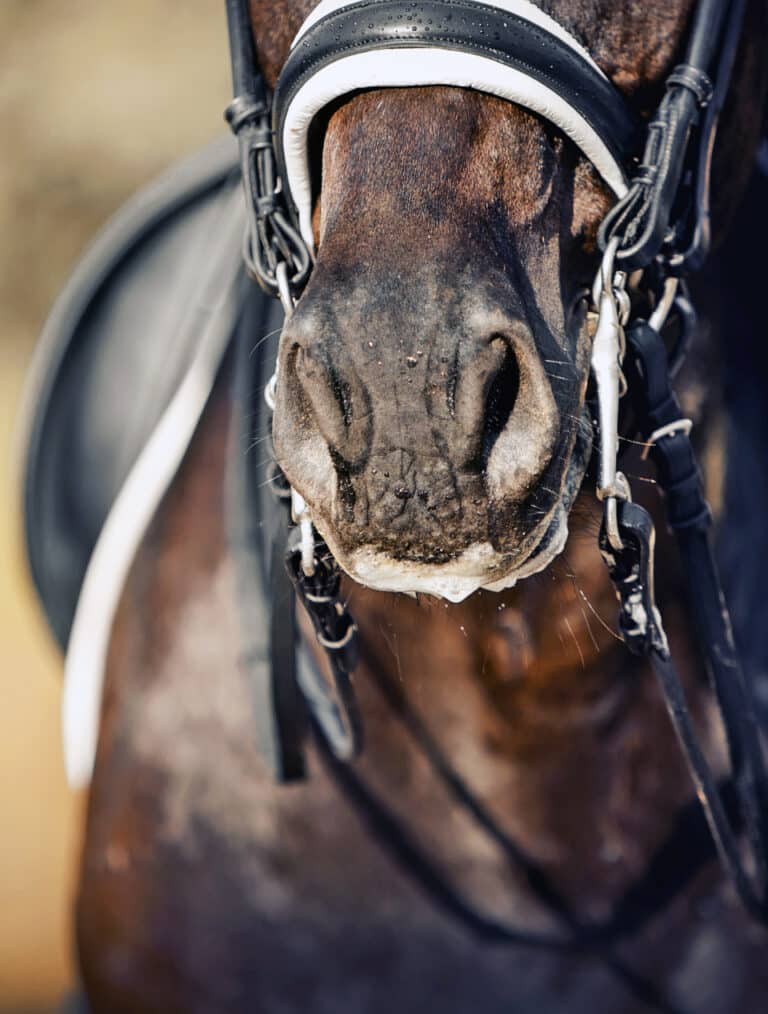
Introducing the double bridle
It takes considerable skill to use a double bridle effectively. NICOLE TOUGH explains why.
Dressage riders are permitted the option of riding with a double bridle from medium level upwards. This doesn’t mean you should graduate to the double bridle as soon as you start competing at medium level, and it certainly shouldn’t be the reason to enter a medium level test.
You should never go to a double bridle to fix or address a contact issue. Any contact issue is only exaggerated in the double bridle. If the horse is evading or resisting the contact in a snaffle, they are not going to miraculously accept the double. Added to this, the simple cavesson noseband on a double bridle cannot deter a horse from opening or crossing their jaw, or evading contact by using their tongue.

Graduating to the double bridle is a serious step, and should be something you undertake with a clear understanding of the function of the individual pieces, and with the help of a trainer. Ideally, you should be able to feel how the snaffle and curb rein have different effects in the horse’s mouth. When introduced at the right time and when used correctly, the double bridle is designed to refine communication at the advanced and higher levels. It should not be used for control or to fix issues.
The double bridle is made up of two bits: the Bradoon and the Weymouth, often referred to as the snaffle and the curb. There are many different types of both these bits and many different anatomical mouths to work with, so some trial and error is needed to find the right fit.
When riding with a double bridle, you should predominantly use the snaffle, with any curb pressure applied only intermittently and for a reason, never out of a habit or because it was an accident. The four reins of the double bridle need to be managed well, so as not to cause irreparable damage to the mouth or undermine the horse’s confidence. This management requires practise and should be undertaken when you have eyes on the ground to ensure good habits are learnt from the get go. If a horse is performing well in the double bridle, a high degree of skill, good training and competence is being shown.
Fitting wise, the curb is attached a little lower in the mouth, where the horse’s jaw is narrower, and so should be 0.5 – 1.0cm smaller than the snaffle. Functionally, a tighter curb chain will reduce the leverage of the curb bit, but will put more pressure on the horse’s lower jaw. Importantly, the curb should never be used to achieve or improve lateral flexion from the poll joint. If a rider attempts to use the curb for this purpose, the horse will very likely tilt at the poll and/or drop their chin towards their chest, and will quite possibly open their mouth to avoid discomfort.
As a coach, my pre-requisites before introducing a student to the double bridle, are that the rider should be well on the way to having an independent seat, the horse should be willing and able to carry their weight on the hind legs in self-carriage, and should be working confidently through their back in the snaffle bridle.

At this point, a good way to introduce a double bridle is to connect a second rein to a snaffle bridle, giving the student the opportunity to practise organising four reins with just the snaffle bit. Then if they accidentally tighten the ‘curb’ rein, or stay on it for too long, they don’t interrupt their horse’s way of going or cause any confidence issues. They can practise shortening the snaffle rein without shortening the curb rein; and learn to tighten and loosen the curb rein as required. When they can do this mid-movement in walk, trot and canter, they are ready for the double bridle.
To ensure that the horse doesn’t associate it with pressure, the first few rides in a double bridle should be easy sessions, even a trail ride.
As a horse develops correctly more and more gears are implemented, culminating at Grand Prix level with seven gears in trot and five gears in canter. When used properly, a double bridle can help the rider manage all the power and energy of these increased gears. This results in a more pleasurable experience for the rider and a more sustainable use of the horse’s body.
It takes considerable skill to use a double bridle effectively and to teach the horse how they should respond to the curb bit. The onus is on us to improve our skill level so we can use the reins and bits separately. And if we are not yet proficient in the use of a double bridle, we should not be using one to pilot our horses through the highest movements of an FEI test just because we want to ride the tricks.



